The Swiss dog that conquers hearts

The Saint Bernard, featured in everything from Christmas cards to glass-blown ornaments, is a giant bundle of joy and a year-round symbol of Switzerland. We visited the Barry FoundationExternal link to sneak in some cuddles and find out directly from owners and experts what it is like to have one as a pet.
You asked us your questionsExternal link about Saint Bernards. Here are (some of) the answers.
Origins – why Barry and why the barrel?
“Barry is the original,” explains Manuela Lanz on the sidelines of a workshop with dog owners at the Barry Foundation in Martigny. “He is the dog who saved 40 people from avalanches on the Great Saint Bernard pass. He is a Swiss symbol. Barry saved so many people. That’s why today he is the national Swiss dog. Everybody knows him.”
Some readers wanted to know what is in the barrel. That, she says, is a secret – code for nobody really knows.
Some people speculate that the original Barry carried schnapps to help revive people swept up in avalanches; others assume it was a medical kit. Loading the dog with alcohol would be a no-no today – its sharp aroma would be the equivalent of a punch for a sensitive canine noise. And medical gear would be too heavy. If you see a beautiful Saint Bernard with a barrel on its collars during an Alpine stroll, you can safely bet it is empty.
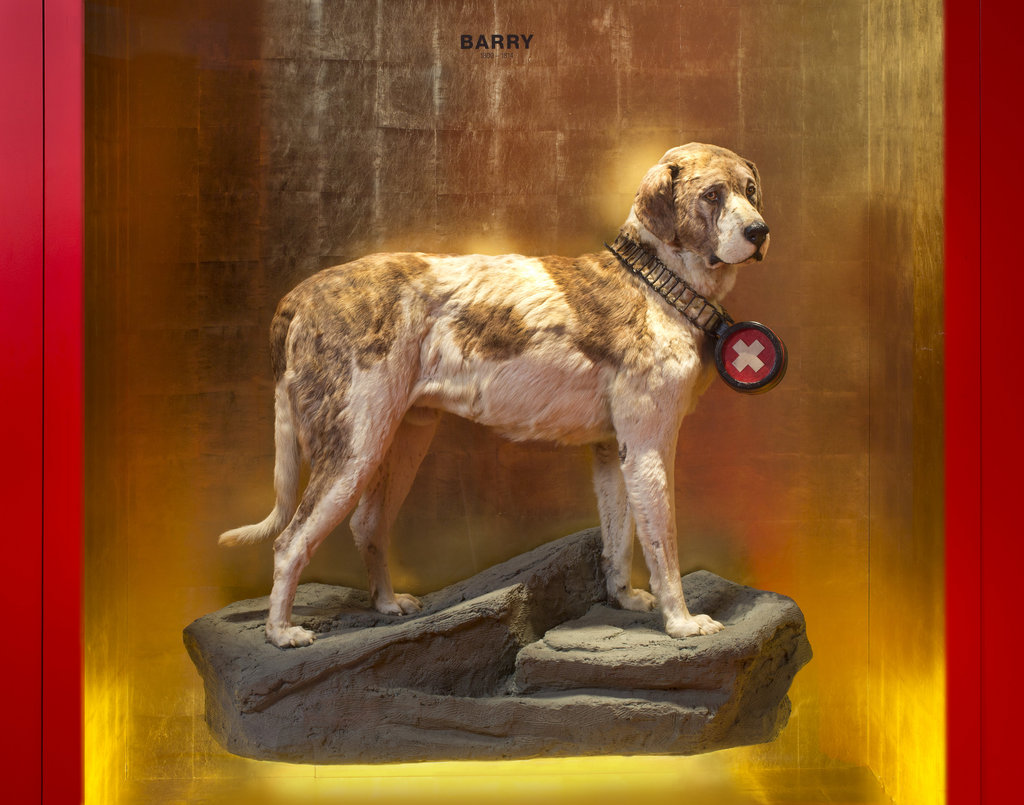
More
Barry the St Bernard: from farm dog to national hero
Puppies and pedigree
The Saint Bernard breed can be found across the globe, noted Lanz, from South America to South Africa. There are about 15 breeders in Switzerland, only eight of which have regular litters. Over her lifetime, a female dog can give birth to three to four litters – ranging from one to a dozen puppies, but typically six to eight each time.
Puppies weigh 500 grams on average. By 18 months, they reach adult size: 55 kilos for female dogs on average and as heavy as 80 kilos for the males.
The breed stands out for its calm character, large size and imposing but affable face. “We prefer to see a clearly demarcated mask,” Lanz told swissinfo.ch. “Then at a minimum you need a spot on the nape, a white collar and the coat has to have very dark, reddish colours. That’s what we prefer.”
How has the look changed over time?
While the original Barry was relatively fine and athletic, over time the breed became more corpulent as bigger breeds were mixed into the lineage. If your grandparents owned one, odds are its jowls were particularly heavy and dragged down the eyes, giving them a droopy red-rimmed look. But too much weight is tough on the joints and can shorten the lifespan of the animal (ten to 12 years on average).
Today, the focus is on restoring the leaner Swiss look. Jennifer Billot, who works at the foundation, told us what that means.
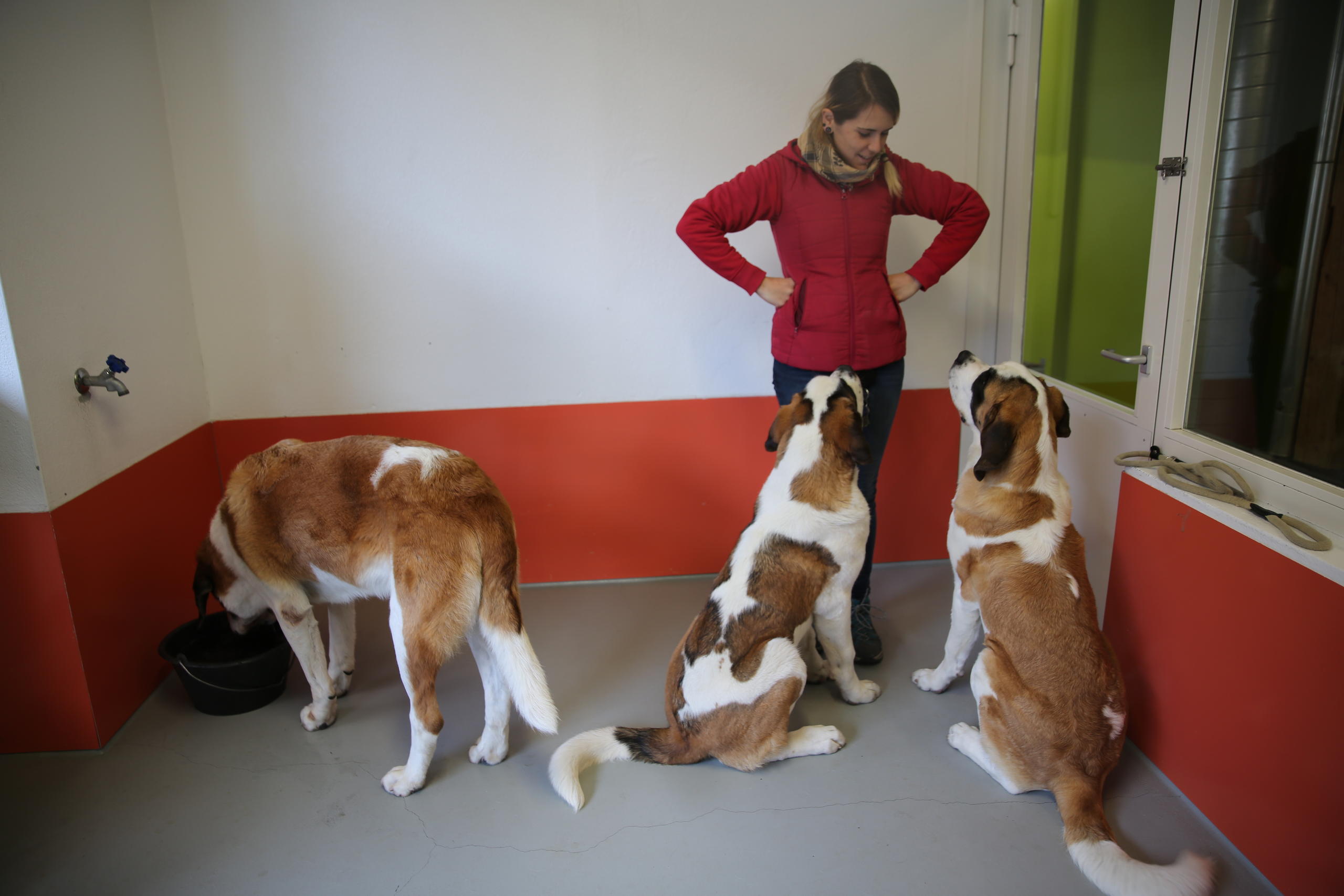
More
The Swiss look
A dog is not just about colour palettes and proportions. It is also about personality.
The Saint Bernard must be calm but competent, capable of undertaking demanding tasks, noted Lanz.
“They are very social, friendly and willing to help,” said Billot, who has taught the dogs at the foundation a wide range of tricks, from collecting tissues from the floor to dunking a miniature basketball. “But they also have a stubborn side. This really is a dog with character.”
Big dog, big costs and compromises?
At the Barry Foundation, dogs eat 600-900 grams of dog biscuits a day, typically broken down into two meals. Those with larger appetites enjoy three meals a day. Dog owners reported feeding their pets similar portions. They drink 10 litres per day – or even more.
Bernard Grandjean, the owner of Kate, spends about CHF1,748 ($1,762) on his dog a year – roughly CHF145 a month and CHF4.80 a day. Oscar Cano estimates he spends up to CHF250 a month on food, veterinary care and accessories for his dog, Quinoa, keeping in mind that a pillow for a Saint Bernard won’t be small. While Quinoa stays outside during the day, she sleeps inside.

More
Sleepyheads
These are dogs who enjoy their beauty sleep. A Saint Bernard typically sleeps 15 hours a day, as many as 20 for the older and younger dogs.
Loveable, friendly, calm. These are the words that owners use when reviewing qualities of their large-pawed buddies. When it comes to the downsides, the consensus is just as clear: size. But there are different reasons for that. For Grandjean, the size of the dog is no problem when it comes to going out to restaurants. Kate is so calm that fellow diners hardly ever realise she is sleeping at his feet. The challenge is when out and about.
“It’s hard to be discreet in public,” he observes. This kind of dog is so closely linked with Switzerland that tourists might ask for a photo. And the breed is so linked with the mountains that city-dwellers might express outrage if Grandjean ventures from the countryside into the city with an animal that “belongs in the Alps”.
The size and strength of the dog also needs to be controlled around elderly people and children, although Kate has a talent for understanding when it is little hands who are holding her leash and has proved particularly gentle and well-behaved at birthday parties. At the same time, their affable nature and “pattability” means Saint Bernards are often taken around homes for old people or those with learning difficulties.
As a guard dog, however, the Saint Bernard gets mixed reviews. For Martina Haering, owner of young Tori, the answer is a definite “no”. She credits Tori’s sleepy head with keeping intruders at bay by blocking the door with her giant body and occasional bark, but really she’s not a guard dog.
Her sheer size can strike fear in small children and pets, but overall she sparks enthusiastic reactions from passers-by.
“Contrary to what you might think, she is a good guard dog,” Cano claims. “If someone tries to come into the garden, she barks but not excessively.”
All owners say they have to be careful about where they go on holiday. Countries with warmer climates are a no-go, unless in winter. Most owners have solutions if they need to go away, but generally they prefer to travel with their pet, picking hotels and apartments accordingly.
Thinking of getting one?
The Barry Foundation delivers about 20 puppies per season. Anyone can buy a dog for CHF2,600 if certain conditions are met.
“They have to have space and time to dedicate to the dog,” Billot explains. “You must have owned a dog in the past because starting with a Saint Bernard is a bit complicated. We check for a lot of things and we try to limit exports. We like to keep the dogs in the area so that we can have news and visit them.”
While many owners felt the sleep-loving dog would be a good “flat mate”, provided the owner had time to exercise the dog, the foundation recommends an outdoor space with at least 500-1,000 square metres. Grandjean has the outdoor space and walks Kate for at least three hours a day on average – 30 minutes first thing, two hours over lunch and another 30 minutes in the evening.
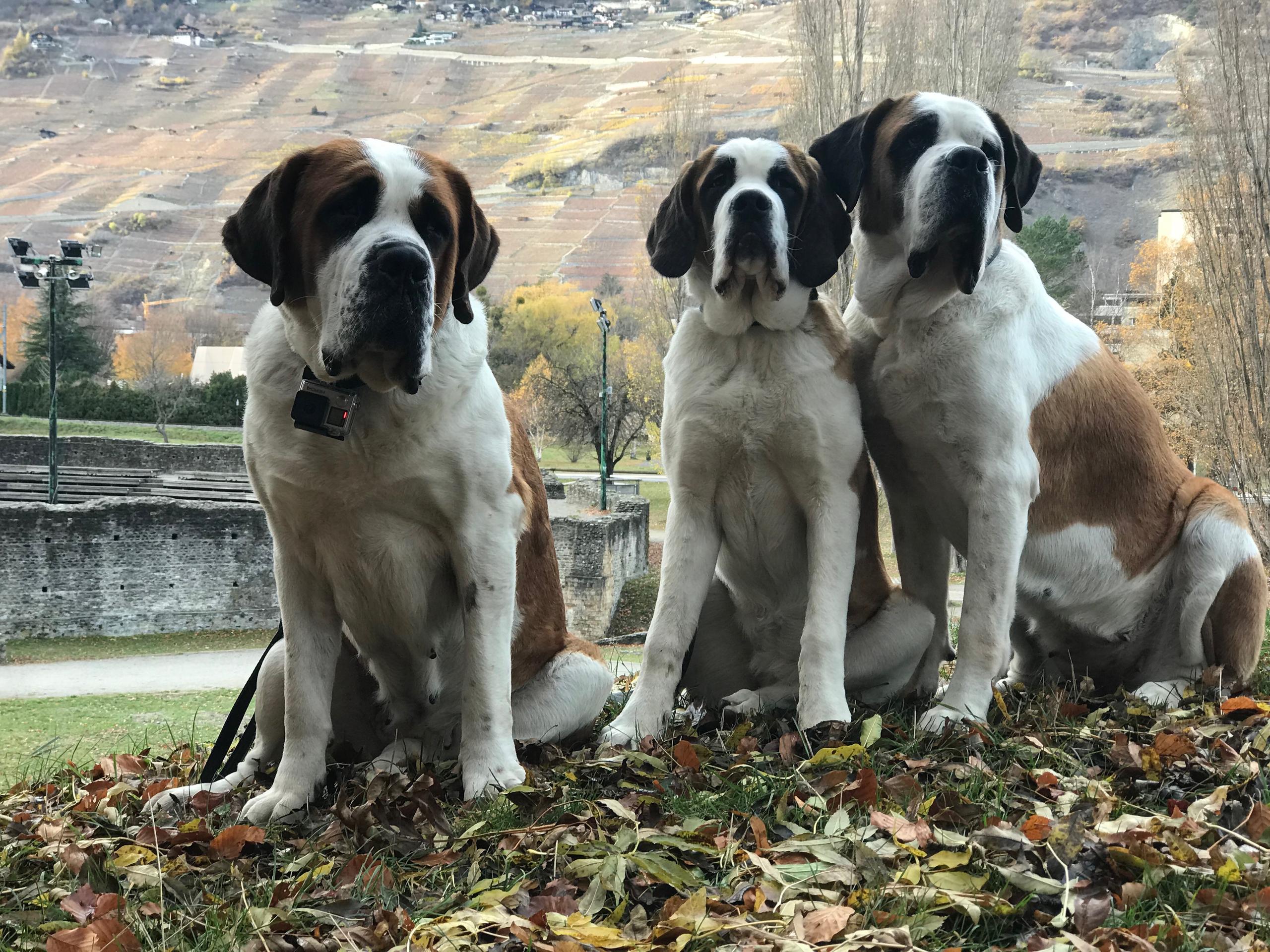
“Inform yourself beforehand,” recommends Haering, who combines training Tori with raising a five-year-old daughter. “There are many dogs who are taken and then families realise that they don’t have the time or space.”
Tori is her first Saint Bernard. She had acquired a love for the dog from her grandmother, who also owned one. While Tori doesn’t always listen, she loves to snuggle and is a source of constant good cheer – not just at Christmas.
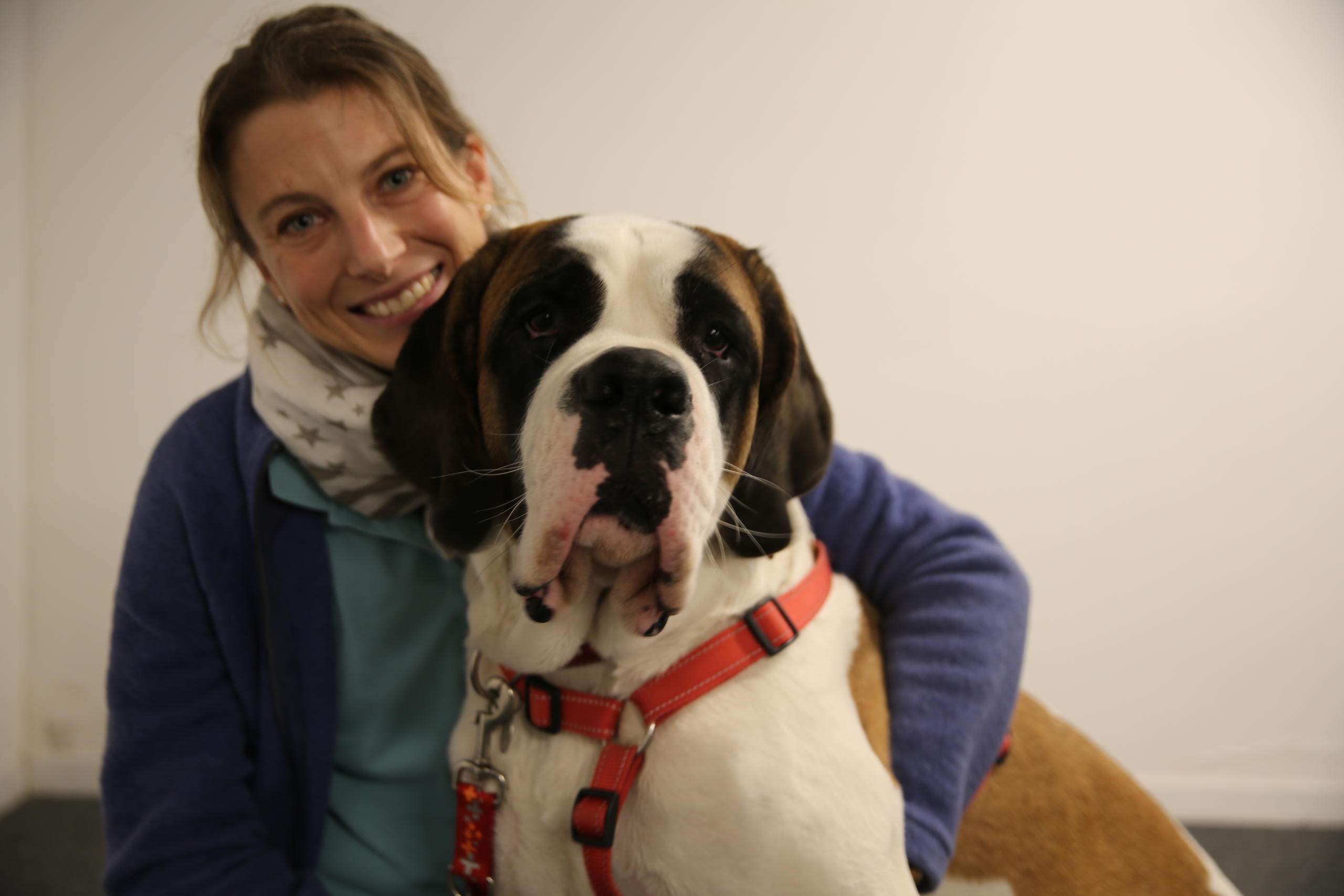
More
A family friend

In compliance with the JTI standards
More: SWI swissinfo.ch certified by the Journalism Trust Initiative





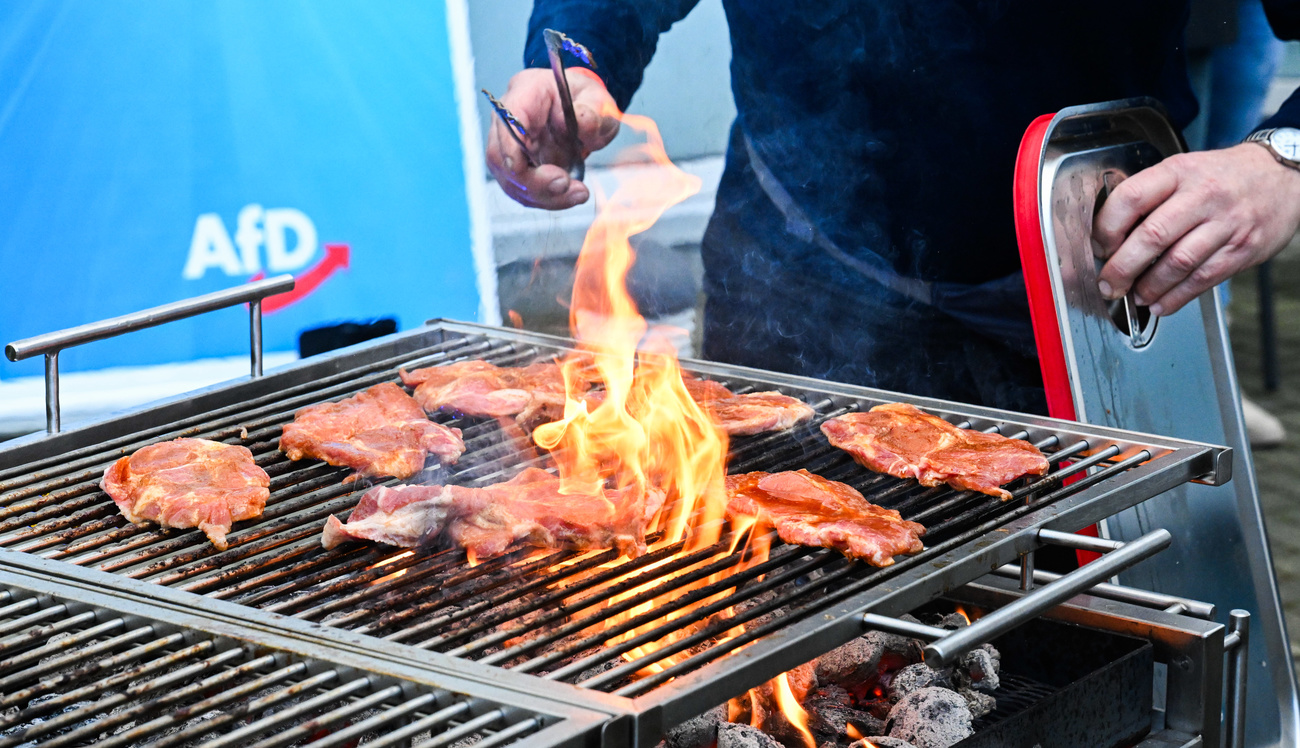




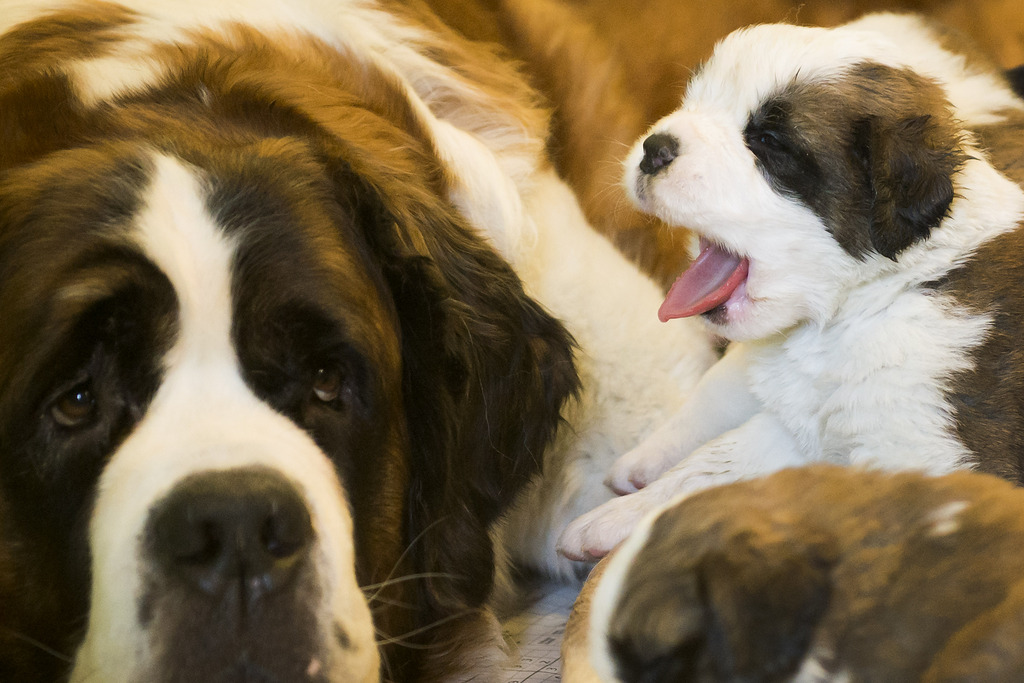


You can find an overview of ongoing debates with our journalists here . Please join us!
If you want to start a conversation about a topic raised in this article or want to report factual errors, email us at english@swissinfo.ch.